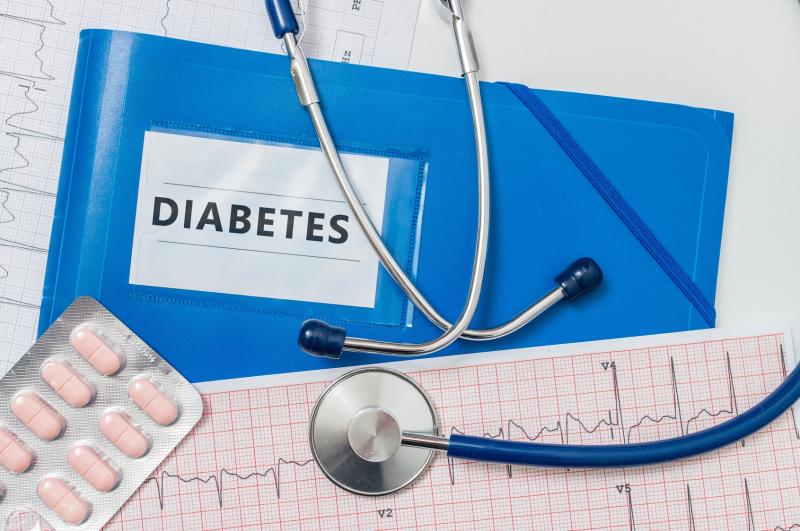GLP1-RA, SGLT2-I: Good first-line of defence against CVD, renal disease in diabetes





In the treatment of patients with type 2 diabetes mellitus (T2DM), both glucagon-like peptide-1 receptor agonists (GLP1-RAs) and sodium-dependent glucose cotransporter-2 inhibitors (SGLT2-Is) help lower blood pressure (BP), improve glucose control without inducing weight gain, and confer cardio- and renoprotection, as shown in a study.
“These observations hold promise for the use of the drugs as first-line agents … to prevent rather than treat established cardiovascular or renal disease,” according to the investigators.
They conducted a meta-analysis of relevant randomized controlled trials (RCTs) to identify the potential application of the two new classes of glucose-lowering drugs in cardiovascular medicine. Pooled data from seven RCTs involving 2,238 T2DM patients showed that SGLT2-Is reduced 24-hour systolic/diastolic BP by 4.4/1.9 mm Hg (95 percent confidence interval [CI], 3.4–5.5/1.2–2.6 mm Hg), whereas two GLP1-RAs RCTs produced contradictory results. [Hypertension 2020;76:420-431]
When given on top of background BP- and glucose-lowering medications, both GLP1-RAs and SGLT2-Is yielded favourable effects on a number of cardiovascular and renal outcomes. Across five SGLT2-Is RCTs, which involved 43,467 patients with 1.5–4.2 years of follow-up, hazard ratios (HRs) were 0.87 (95 percent CI, 0.82–0.93) for major adverse cardiovascular event (MACE), 0.68 (95 percent CI, 0.62–0.75) for heart failure (HF), 0.82 (95 percent CI, 0.72–0.93) for cardiovascular death, 0.87 (95 percent CI, 0.79–0.96) for myocardial infarction, and 0.61 (95 percent CI, 0.56–0.67) for chronic kidney disease (CKD) progression.
On the other hand, summary data from seven GLP1-RA RCTs, including 56,004 patients with 1.3–5.4 years of follow-up, showed HR estimates of 0.88 (95 percent CI, 0.84–0.93) for MACE, 0.84 (95 percent CI, 0.74–0.89) for CKD, and 0.84–0.90 for individual MACE endpoints. Drugs from this class did not significantly prevent HF, and SGLT2-Is had a null effect on stroke.
Notably, the greater the decrease in systolic BP, the lower the risk of HF and CKD, but not MACE. Meanwhile, stricter glycaemic control correlated with higher HF risk but had no effect on MACE or CKD.
The respective aggregate effect sizes on systolic BP, body weight, and glycated haemoglobin were −1.61 mm Hg, −2.40 kg, and −0.69 percent with GLP1-RAs, and −2.53 mm Hg, −1.15 kg, and −0.24 percent with SGLT2-Is (p<0.001).
“GLP1-RAs improve glycaemic control via activation of the secretin system and SGLT2-Is via the renal tubular excretion of sodium and glucose,” the investigators said, adding that the lack of benefit of GLP1-RAs on HF was not surprising.
They pointed out that such the null effect was to be expected in light of “the high frequency of previous cardiovascular disease, including myocardial infarction and HF, the prevalence of moderate-to-severe CKD, which often precedes or coincides with HF, and the chronotropic effects of GLP1-RAs.”
SGLT2-Is, on the other hand, protect against HF through the effects of mild diuresis and lowering of systolic BP, the improvement in renal function and the metabolic conditions, and the drugs’ anti-inflammatory properties. [Postgrad Med 2019;131:82-88; J Clin Invest 2014;124:485-487; Diabetol Metab Syndr 2017;9:78; Horm Metab Res 2015;47:686-692]
Furthermore, while both GLP1 RAs and SGLT2-Is were renoprotective, the latter exerted additional effects—such as restoration of the tubuloglomerular balance and a decline in albumin excretion, among others—that also contributed to cardioprotection through maintenance of euvolemia and avoidance of volume overload, which was essential in patients with HF. [Circulation 2016;134:752-772]
The investigators called for additional investigations to establish the application of GLP1- RAs or SGLT2-Is in asymptomatic people with preclinical illness selected based on age, clinical risk scores, and the published and validated diagnostic thresholds of the multidimensional urinary proteomic markers CKD273 and HF1.